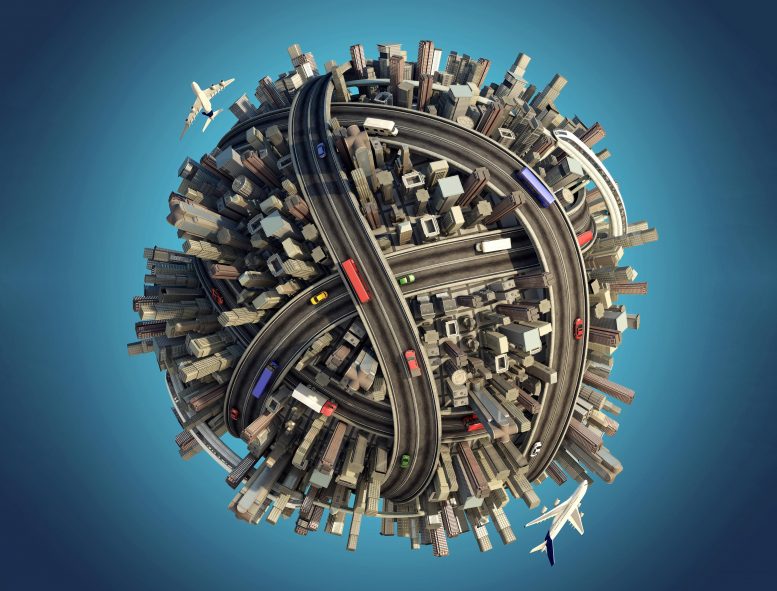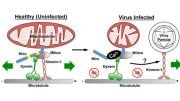
Advanced transportation facilitates extensive travel, offering benefits but posing disease control risks. Infected individuals may unknowingly spread diseases to disease-free regions, causing outbreaks.
Due to continual improvements in transportation technology, people travel more extensively than ever before. Although this strengthened connection between faraway countries comes with many benefits, it also poses a serious threat to disease control and prevention. When infected humans travel to regions that are free of their particular contagions, they might inadvertently transmit their infections to local residents and cause disease outbreaks. This process has occurred repeatedly throughout history; some recent examples include the SARS outbreak in 2003, the H1N1 influenza pandemic in 2009, and — most notably — the ongoing COVID-19 pandemic.
Imported cases challenge the ability of nonendemic countries — countries where the disease in question does not occur regularly — to entirely eliminate the contagion. When combined with additional factors such as a genetic mutation in pathogens, this issue makes the global eradication of many diseases exceedingly difficult, if not impossible. Therefore, reducing the number of infections is generally a more feasible goal. But to achieve control of a disease, health agencies must understand how travel between separate regions impacts its spread.
In a paper published on Tuesday in the SIAM Journal of Applied Mathematics, Daozhou Gao of Shanghai Normal University investigated the way in which human dispersal affects disease control and the total extent of an infection’s spread. Few previous studies have explored the impact of human movement on infection size or disease prevalence — defined as the proportion of individuals in a population that are infected with a specific pathogen — in different regions. This area of research is especially pertinent during severe disease outbreaks, when governing leaders may dramatically reduce human mobility by closing borders and restricting travel. During these times, it is essential to understand how limiting people’s movements affects the spread of disease.
To examine the spread of disease throughout a population, researchers often use mathematical models that sort individuals into multiple distinct groups, or “compartments.” In his study, Gao utilized a particular type of compartmental model called the susceptible-infected-susceptible (SIS) patch model. He divided the population in each patch — a group of people such as a community, city, or country — into two compartments: infected people who currently have the designated illness, and people who are susceptible to catching it. Human migration then connects the patches. Gao assumed that the susceptible and infected subpopulations spread out at the same rate, which is generally true for diseases like the common cold that often only mildly affect mobility.
Each patch in Gao’s SIS model has a certain infection risk that is represented by its basic reproduction number (R0) — the quantity that predicts how many cases will be caused by the presence of a single contagious person within a susceptible population. “The larger the reproduction number, the higher the infection risk,” Gao said. “So the patch reproduction number of a higher-risk patch is assumed to be higher than that of a lower-risk patch.” However, this number only measures the initial transmission potential; it can rarely predict the true extent of infection.
Gao first used his model to investigate the effect of human movement on disease control by comparing the total infection sizes that resulted when individuals dispersed quickly versus slowly. He found that if all patches recover at the same rate, large dispersal results in more infections than small dispersal. Surprisingly, an increase in the amount by which people spread can actually reduce R0 while still increasing the total amount of infections.
The SIS patch model can also help elucidate how dispersal impacts the distribution of infections and prevalence of the disease within each patch. Without diffusion between patches, a higher-risk patch will always have a higher prevalence of disease, but Gao wondered if the same was true when people can travel to and from that high-risk patch. The model revealed that diffusion can decrease infection size in the highest-risk patch since it exports more infections than it imports, but this consequently increases infections in the patch with the lowest risk. However, it is never possible for the highest-risk patch to have the lowest disease prevalence.
Using a numerical simulation based on the common cold — the attributes of which are well-studied — Gao delved deeper into human migration’s impact on the total size of an infection. When Gao incorporated just two patches, his model exhibited a wide variety of behaviors under different environmental conditions. For example, the dispersal of humans often led to a larger total infection size than no dispersal, but rapid human scattering in one scenario actually reduced the infection size. Under different conditions, small dispersal was detrimental but large dispersal ultimately proved beneficial to disease management. Gao completely classifies the combinations of mathematical parameters for which dispersal causes more infections when compared to a lack of dispersal in a two-patch environment. However, the situation becomes more complex if the model incorporates more than two patches.
Further investigation into Gao’s SIS patch modeling approach could reveal more nuanced information about the complexities of travel restrictions’ impact on disease spread, which is relevant to real-world situations — such as border closures during the COVID-19 pandemic. “To my knowledge, this is possibly the first theoretical work on the influence of human movement on the total number of infections and their distribution,” Gao said. “There are numerous directions to improve and extend the current work.” For example, future work could explore the outcome of a ban on only some travel routes, such as when the U.S. banned travel from China to impede the spread of COVID-19 but failed to block incoming cases from Europe. Continuing research on these complicated effects may help health agencies and governments develop informed measures to control dangerous diseases.
Reference: “How does dispersal affect the infection size?” by Daozhou Gao, 22 September 2020, SIAM Journal on Applied Mathematics.
DOI: 10.1137/19M130652X









https://epubs.siam.org/doi/pdf/10.1137/19M130652X
I don’t see any issues with traveling these days. Moreover, I’m gonna travel to Africa and go throw the Machame route https://en.altezza.travel/kilimanjaro/machame-route-guide and many more places there. People are worried about things that are not as dangerous as they think.
We must extreme caution during the current Corona Pandemic. And you should be more careful when traveling. Party buses are one of the few safe travel arrangements available today. Because you can travel safely with your family and friends on the party bus. A few days ago I set out on a travel trip with my family. We rent a party bus and we end our trip in a beautiful way from Party Bus Of Las Vegas. People can visit to get all their information http://partybusoflasvegas.com/